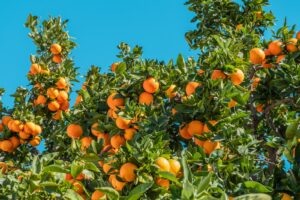Natural vegetation can play a small part in cleaning up air pollution but would need to be considered alongside other pollution reduction measures, studies published this month have suggested.
These are the findings of major reports issued by the government’s Air Quality Expert Group (AQEG) last week, and the Office for National Statistics today (30 July) both of whom have both sought to assess the impact of woodland, plants, grasslands and other vegetation at removing pollutants from the air.
Vegetation will not solve the whole issue of air quality in the UK, a report has suggestedAccording to ONS, whose report was put together by the Centre for Ecology and Hydrology, an estimated 1.4 billion kg of air pollutants were removed by natural vegetation in 2015 — saving a potential £1 billion in avoided health costs.
However, the ONS report suggests that over five times as much PM2.5 was emitted in the UK than was removed by vegetation in 2015.
ONS’s study looked at the role of vegetation in removing air pollutants, and the benefits they provide to human health through reductions in exposure. This included fine particles (PM2.5) as well as PM10, nitrogen dioxide, ground-level ozone, ammonia and sulphur dioxide.
The study suggested that for 2015, the total existing UK vegetation reduces the average annual surface concentration by about 10% for PM2.5, 6% for PM10, 13% for O3, 24% for NH3 and 30% for SO2, but did not markedly change NO2 concentrations.
Woodland dominated the removal of PM, whilst agricultural land (accounting for 4.3 times as much land area), dominated the removal of gaseous pollutants, the report suggested.
ONS has provided a per-hectare estimate of the potential pollution removal and health cost saving from vegetation in areas across the UK.
The report concludes: “Even though vegetation will not solve the whole issue of air quality in the UK, and in some cases vegetation can have adverse effects on air quality, the service of air pollution absorption by vegetation is nevertheless an important one.”
AQEG
Similarly AQEG, which advises government on current research and thinking around air quality, has reviewed available research on the impact of vegetation on air pollution and concluded: “vegetation and trees in particular are regarded as beneficial for air quality, but they are not a solution to the air quality problems at a city scale.”
In its report, the expert group goes on to state: “Compared with emissions control at source, removing pollutants once diluted into the atmosphere is challenging because of the large volume of air into which the pollutants have been dispersed compared to the surface area to which any potential abatement technology may be applied.”
Setting out the potential policy impacts of its findings, AQEG has suggested that an ‘integrated’ policy which separates people spatially from major pollution sources and in which vegetation is used between the sources and the urban population maximises its beneficial effects.
Related Links
ONS – UK air pollution removal: how much pollution does vegetation remove in your area?
AQEG – Impact of vegetation on air pollution
















